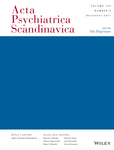Many patients with eating disorders (EDs) engage in excessive and compulsive physical activity (pathological exercise, PE) to regulate negative mood or to “burn calories.” PE can lead to negative health consequences. Non-exercise activity (NEA) bears the potential to serve as intervention target to counteract PE and problematic eating behaviors since it has been associated with positive mood effects. However, to date, there is no investigation on whether the positive link between NEA and mood seen in the healthy translates to patients with ED.
To study potential associations of NEA and mood in ED, we subjected 29 ED-patients and 35 healthy controls (HCs) to an ambulatory assessment study across 7 days. We measured NEA via accelerometers and repeatedly assessed mood on electronic smartphone diaries via a mixed sampling strategy based on events, activity and time. Within- and between-subject effects of NEA on mood, PE as moderator, and the temporal course of effects were analyzed via multilevel modeling.
NEA increased valence (β = 2.12, p < 0.001) and energetic arousal (β = 4.02, p < 0.001) but showed no significant effect on calmness. The effects of NEA on energetic arousal where significantly stronger for HCs (β HC = 6.26, p < 0.001) than for EDs (β ED = 4.02, p < 0.001; β interaction = 2.24, p = 0.0135). Effects of NEA were robust across most timeframes of NEA and significantly moderated by PE, that is, Lower PE levels exhibited stronger NEA effects on energetic arousal.
Patients with ED and HC show an affective benefit from NEA, partly depending on the level of PE. If replicated in experimental daily life studies, this evidence may pave the way towards expedient NEA interventions to cope with negative mood. Interventions could be especially promising if delivered as Just-in-time adaptive interventions (JITAIs) and should be tailored according to the PE level.



